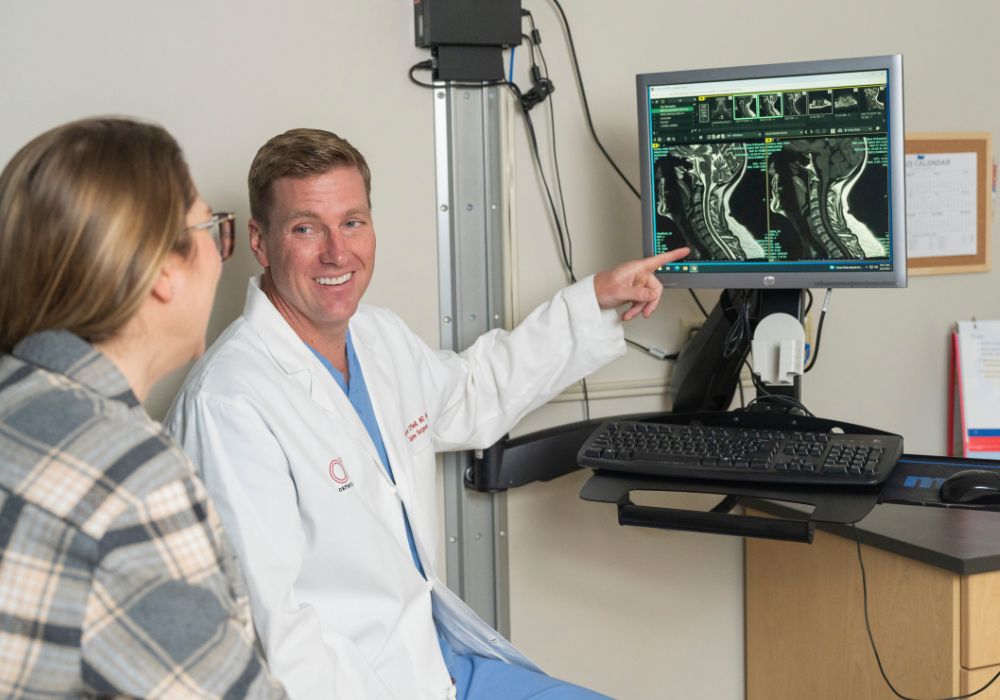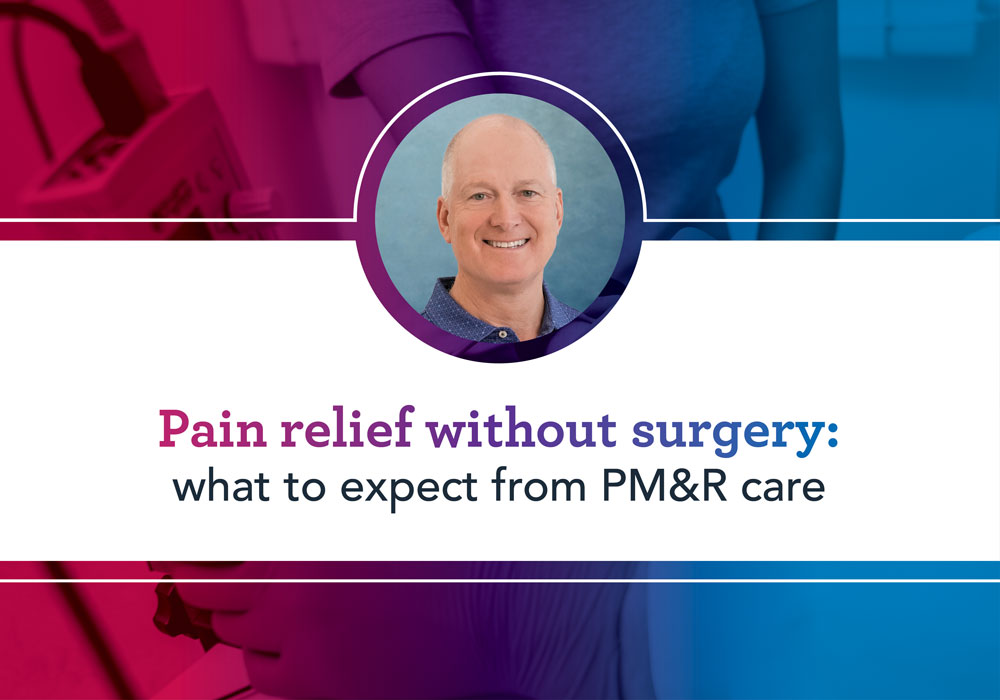Back pain is one of the most common health issues people face and for many, it disrupts daily life in significant ways. Whether caused by injury, degenerative conditions or spinal deformities like scoliosis, the first step to finding relief is understanding your treatment options.
At OrthoIndy, patients benefit from an integrated approach to spine care that includes both surgical and non-surgical specialists.
Starting with conservative treatment options
For most individuals, the journey toward back pain relief starts with non-surgical treatments. These may include physical therapy, medications, lifestyle modifications or interventional procedures such as spinal injections.
Many patients can manage or eliminate back pain without ever needing surgery – often with the help of a non-surgical spine specialist also known as a physical medicine and rehabilitation (PM&R) doctor or physiatrist.
The role of PM&R physicians in spine care
These non-surgical spine specialists focus on diagnosing and treating musculoskeletal conditions through conservative methods that restore function and reduce pain. Dr. Mark Osborne, a PM&R doctor at OrthoIndy, works closely with surgical colleagues to ensure each patient gets the right level of care at the right time.
“When I see a patient who isn’t getting better with conservative measures, whether physical therapy isn’t working or the injection isn’t helping as much as we want, that’s when I go across the hall to talk to one of my surgical partners,” says Dr. Osborne. “We review the patient’s case, MRIs and then come up with an individualized treatment plan that’s right for that person.”
When surgery becomes the best option
Collaboration between non-operative physicians and spine surgeons ensures that patients receive well-rounded and personalized care plans. If surgery is needed, the transition is seamless and done by fellowship-trained surgeons who are also involved in research and innovation.
“Surgery is often considered a last resort, but for certain conditions – like spinal deformities, nerve compression or severe instability – it can be the most effective path to lasting relief,” says Dr. Kevin O’Neill, spine surgeon at OrthoIndy.
“We’re committed to innovation and delivering the most advanced care available. Whether that means using new, non-surgical interventions to help patients avoid the operating room or performing minimally invasive surgeries, we’re leading the way,” he says. “By leveraging tools like robotics and artificial intelligence, we’re able to achieve the best possible outcomes for our patients.”
Advancements in surgical techniques
Advanced surgical technologies, such as minimally invasive and endoscopic spinal decompressions and discectomies mean smaller incisions and less tissue damage. For occasions when implants may be needed, highly refined computer image guidance and robotics are available to further enhance surgical performance. “We’re seeing that these advancements have enhanced patient safety, surgical outcomes and often lead to shorter patient recovery times,” Dr. O’Neill says.
At OrthoIndy, we’re not only using the latest technology of this generation, we’re also helping to develop and define what the next generation of spine surgery will be.
Choosing the right path for you
Ultimately, the decision between surgical and non-surgical spine options depends on several factors:
- Symptom severity
- Underlying diagnosis
- Response to previous treatments
- Post-treatment goals
Whether you’re dealing with chronic low back pain or navigating a new diagnosis, relief starts with the right team – and the right treatment path.
At OrthoIndy, you’ll find both.




